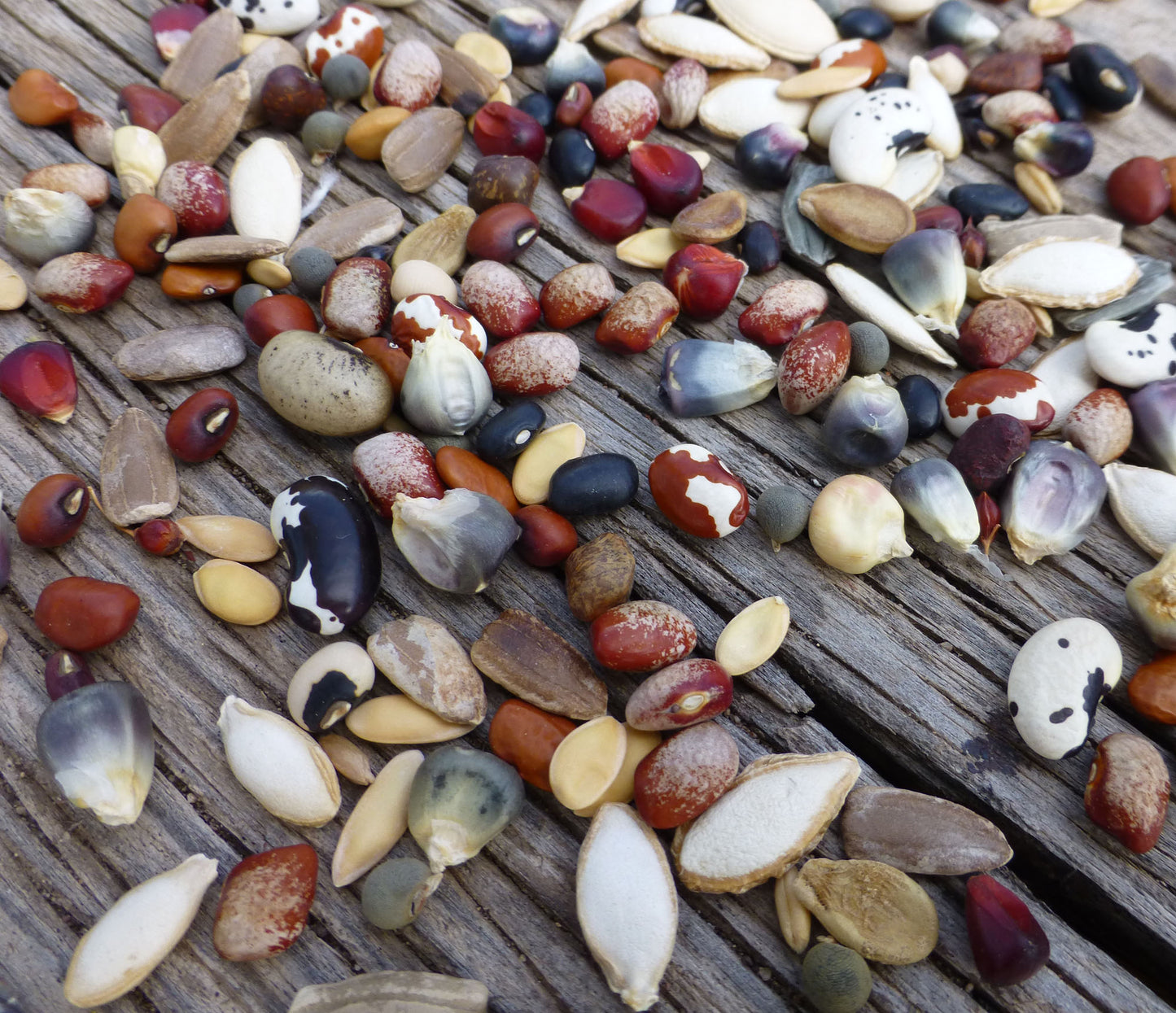
You must give to get, you must sow the seed, before you can reap the harvest.-Scott Reed
Many of the seeds we steward are either rare in occurrence, threatened by loss of habitat, or in danger of extinction as supplies are small. Keeping them in a seed bank is not enough to ensure their availability for generations to come as seeds age and lose viability. Getting these seeds back in the ground is a necessary means to produce fresh, viable stock and to have plentiful quantities to provide even more seeds to more people.
The 2015 field season finds us with growing nearly 100 different varieties from the NS/S seed bank collection at our Conservation Farm with the goal of increasing viable seed stock to distribute to gardeners and farmers. It takes many hands to conserve native seeds. Each of the crops planted at the farm will be tended by staff, interns, and volunteers. You can lend a hand by participating in our Adopt-A-Crop program. Your gift of symbolic adoption will directly support our crop conservation work.
ADOPT-A-CROP, CONTINUED: NURTURING A THREATENED LANDRACE
This year we are highlighting six varieties being grown at the farm as a representation of the incredible crop diversity and stories we aim to preserve. Simply click on your crop of choice below and fill out the form. After harvest, we will send you a report about the 2015 growout season, including photos and information on these highlighted crops from germination to harvest. And if you donate at the $50 level or higher, you will have the option to receive a packet of seeds from the harvest.
Thank you for being an important part of our stewardship efforts!
http://shop.nativeseeds.org/collections/corn-sweet/products/zs106
GILA RIVER SWEET CORN (ZEA MAYS)
Our 2015 efforts are to increase the quantity of this rare low desert sweet corn variety originally grown by Pima farmers along the Gila River. In 2014 we successfully grew out this variety allowing us to conserve fresh seed within out seed bank. An unknown prospector collected this accession in the 1860s, along with about a dozen other sweet corn varieties from indigenous peoples living in Arizona. He apparently loved sweet corn and was hoping to plant it later in California. His sweet corn collection passed through the hands of several other seed keepers over the years, eventually reaching Homer Owens who donated the collection to NS/S in 1987. More about the Homer Owens collection and it’s interesting past can be found in the No.17 Seedhead News
PAIUTE YELLOW TEPARY BEAN (PHASEOLUS ACUTIFOLIUS)
Tepary beans are known as some of the most arid-adapted crop varieties in the world. What is unique about this variety is that it is from Paiute farmers of the Kaibab Indian Reservation at 5000 feet. Most tepary varieties are from the Sonoran desert region, lower in elevation. Like other rare, high elevation tepary varieties, this bean is larger and plumper than low desert varieties.
GUARIJIO CHILTEPIN (CAPSICUM ANNUUM GLABRIUSCULUM)
These firey little peppers pack a punch! Chiltepin’s are known as the mother of chiles such as jalapeños, bell peppers, and pablanos. These wild chiles were domesticated in central Mexico several thousand years ago. Many wild chiltepin varieties can still be found growing including areas of the Sonoran and Chihuahuan deserts. This variety is used by the Guarijio peoples of southern Sonora.
RIO GRANDE RED SEEDED WATERMELON (CITRULLUS LANATUS)
This accession was sent to NS/S from a member who found this “wild watermelon” growing in the Rio Grande Valley or New Mexico. The fruits are said to be small, softball sized with white-to-yellow flesh. What is unusual about this variety is that the seeds are red in color. Is it sweet? Is it bitter? We don’t know yet. It is possible that this variety resembles a species variation known as Citrullus lanatus var. citroides that does not have edible raw flesh but is used for making candied citron preserves. We will test it and report back.
NAVAJO BANANA SQUASH (CUCURBITA MAXIMA)
A type of elongated Hubbard squash with pale to bright orange skin. This variety has not yet been grown by NS/S. It was described by the Navajo family who donated seeds as a very old Navajo variety. This family lives near Oak Spring, New Mexico that once was a stagecoach stop in the late 1800s. They would regularly bring produce to the Shiprock fair in the Fall.
